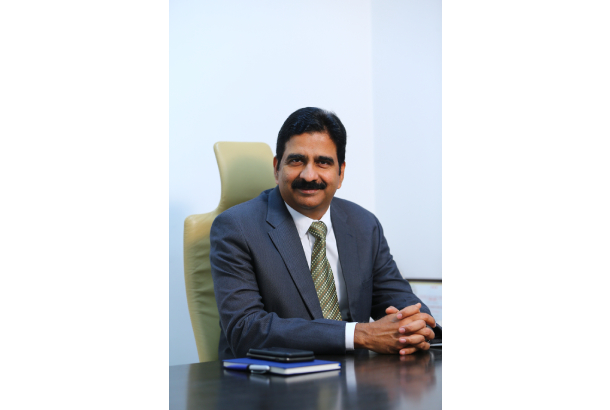What are the projects of interest that will be transforming the face of Roads & Highways in the country in 2023?
In an announcement last year, the Hon’ble Minister for Road Transport and Highways Nitin Gadkari said that he would make all Indian roads like roads in America by 2024. This is obviously no small feat and a lot of work is being put in place to achieve this goal. The Bharatmala Pariyojana, for instance, envisages an easy flow for traffic all over India and to this end, has developed a Golden Quadrilateral and North-South, East-West corridors to ease traffic congestion. Under this mega plan, the Government of India has also envisioned developing 34,000-km of National Highway corridors, out of which the majority will be Greenfield Corridors. The government has announced its intention to focus on developing such Greenfield Corridors under Bharatmala II, and in my view, the major Greenfield projects would include the Warangal Greenfield Highway, with a distance of 108-km and the 100-km long Greenfield Highway in Khammam, both of which would impact the South Indian highway landscape positively.
What are some of your significant projects in this sector in 2023?
Our company, Vishwa Samudra Engineering, has dealt with some significant projects in the roads and expressways sector. Among our major projects are the Rural Roads Upgradation project in Uttar Pradesh under the PradhanMantri Gram SadakYojana, where we are upgrading 257-km of rural roads under UPRRDA with Full Depth Recycling using the StabilRoad additive; the 6 lane highway in Kannur, Kerala of length 29.948-km costing INR 2038 crore; the 6 lane Highway in Kollam, Kerala of length 31.5-km and costing INR 1580 crore; the four/six lane Highway in Jammu, with a length of 35.15-km and costing INR 1870 crore; the 6-lane highway in Parvoor, Kerala of length 37.5-km costing INR 1152 crore.
What technology advancements are adding to the growth of the Roads & Highways sector?
The future of the Roads and Highways sector looks very promising, with a focus on technological advancement and a movement away from conventional methods of construction. The idea is to build roads that are durable yet cost-effective; sustainable yet technologically advanced. One way to go about this is with the help of construction additives that economize on precious natural resources like construction aggregate. Sustainable and eco-friendly are the buzzwords here, and we can see this in other technological advancements such as pavements that use recycled plastic, the use of self-healing asphalt in road building and so on. There is also an increased focus on automation and machine-controlled technologies in the Roads and Highways sector. As we know, an efficient Roads and Highways network eventually contributes towards an increase in GDP. Overall, the intention for this sector is to use innovative technologies to develop a more sustainable and eco-friendly approach to infrastructure. Another element I foresee that may enter in a couple of years is the use of electrical equipment and machinery in road construction that will be a big step in reducing carbon emissions. These new technologies help in reducing cost, accelerating project delivery timelines and reducing carbon emissions.
What are the present roadblocks in implementing these technological advancements?
Implementing these technologies is highly dependent on the Employer of the Project and their acceptability towards trying new techniques. Companies sometimes face systemic prejudice when it comes to implementing innovative materials and methods and gaining approvals for various projects within specific timelines can be problematic. Another consistent challenge is the fluctuation in the prices of materials which affects the possibility of using new technologies.
What is that one technology that you would like to see being implemented in the sector?
Our experience with using an advanced technology like StabilRoad has proved, both to ourselves and to the world, that great things can be achieved with the right technology. StabilRoad is a unique additive that reduces the need for aggregate by up to 80%. In doing so, it fulfils a very vital environmental need and is thus a highly sustainable technology. In addition, it is also cost effective and extremely efficient, saving on labour, transport and material costs. StabilRoad is proof that being environment-friendly can also make economic sense. Roads made using the StabilRoad additive can be used within 24 hours, and require minimum maintenance once made, unlike conventional roads. A highly durable and resistant technology from Germany, StabilRoad is definitely one technology I would like to see implemented extensively in the Roads and Highways sector across the country for all kinds of roads.
Given the rising focus of implementing technology, how do you see the future outlay of the Roads & Highways sector in the country in 2023?
The future of the Road and Highways sector is shining bright. It’s driven by change and technology, and India has the best of all the worlds today. The Government of India has realized the importance of roads and highways in fuelling economic development and has pulled out all the stops when it comes to investing in our already advanced roads and highways system. The result is a network that is not only extensive, but also technologically secure. In India, like elsewhere in the world, favour is shifting towards green technologies and the conservation of resources in road building. There is an increasing preference for technologies that require less aggregate during construction and emit minimum carbon emissions. In the next forty years, the Ministry of Road Transport and Highways plans to improve connectivity to remote and far flung areas, including those in tribal and mountainous regions of the country. To this end, the ministry is expected to get a budgetary allocation of more than INR 2.5 lakh trillion in 2023-24 alone. The budgetary allowances for roads and highways and infrastructure in general have been hiked from 2023 onwards, realizing their importance to the economy.
I am positive we will see more roads being built using green technologies like StabilRoad and alternate technologies that will save time, cost and reduce emissions.






